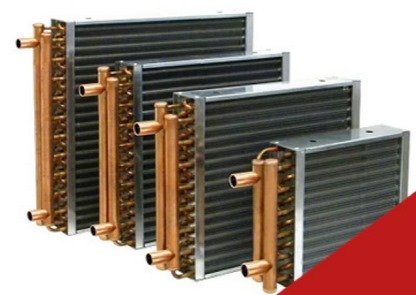
The Condenser Coil and Evaporator Coil are integral components of HVAC and refrigeration systems, enabling the heat exchange processes that make cooling and heating possible. Here’s a detailed breakdown of each:
Condenser Coil
Function:
-
The condenser coil facilitates the release of heat absorbed by the refrigerant to the surrounding environment. It is part of the outdoor unit in an air-cooled system.
Working Principle:
-
High-Pressure Refrigerant: Refrigerant enters the coil as a high-pressure, high-temperature gas from the compressor.
-
Heat Dissipation: The refrigerant releases its heat as air (or water in water-cooled systems) passes over the coil.
-
Phase Change: The refrigerant cools and condenses into a high-pressure liquid.
Materials:
-
Made from copper, aluminum, or a combination of both for their excellent thermal conductivity and durability.
Types:
-
Finned-Tube Coils: Have fins to increase surface area for heat exchange.
-
Microchannel Coils: Compact design with enhanced heat transfer efficiency.
Evaporator Coil
Function:
-
The evaporator coil absorbs heat from the indoor air (or process fluid in industrial systems) and cools it. It is located in the indoor unit or air handler.
Working Principle:
-
Low-Pressure Refrigerant: The refrigerant enters as a low-pressure, low-temperature liquid/gas mixture.
-
Heat Absorption: Air (or fluid) passes over the coil, and the refrigerant absorbs heat, cooling the air.
-
Phase Change: The refrigerant evaporates into a low-pressure gas during this process.
Materials:
-
Typically made from copper or aluminum tubing with aluminum fins for better heat transfer.
Types:
-
A-Coils: Shaped like an “A” and commonly used in residential systems.
-
Slab Coils: Flat design, often used in commercial applications.
-
Cased Coils: Enclosed in a metal casing for protection.
